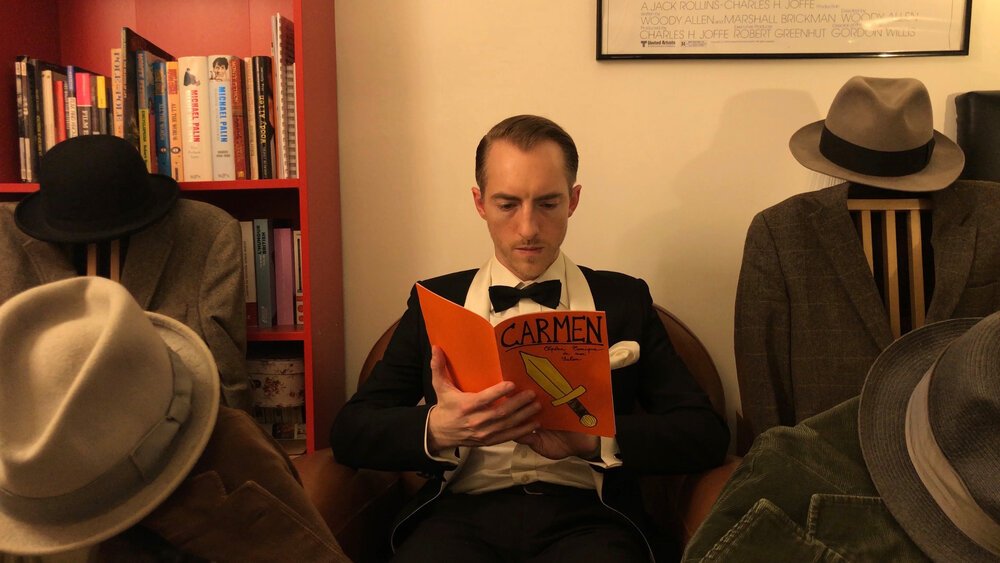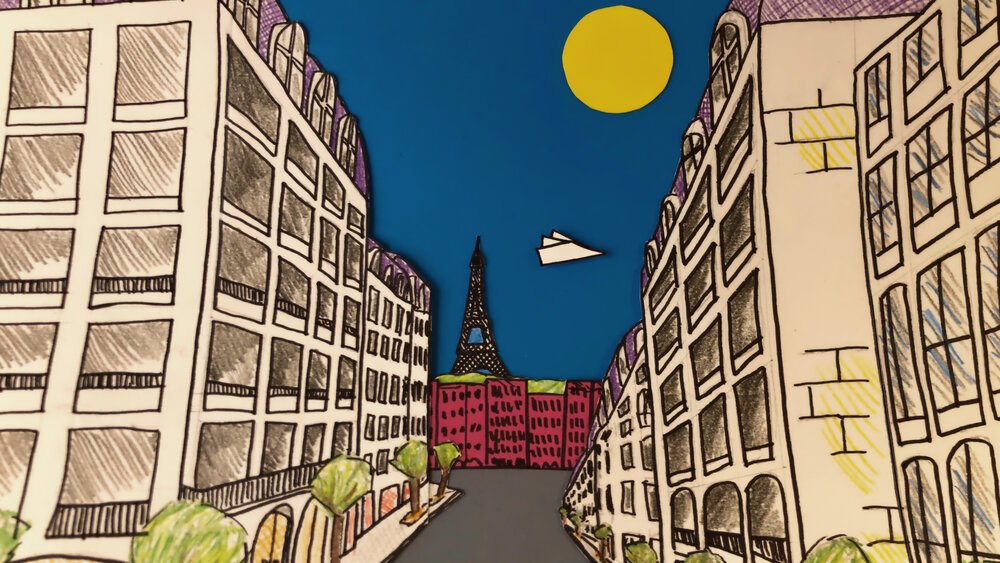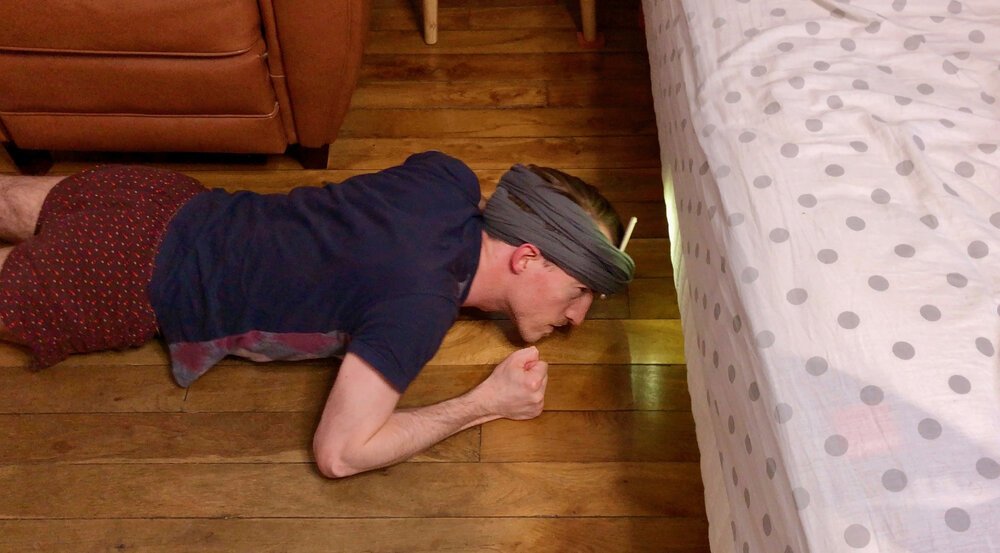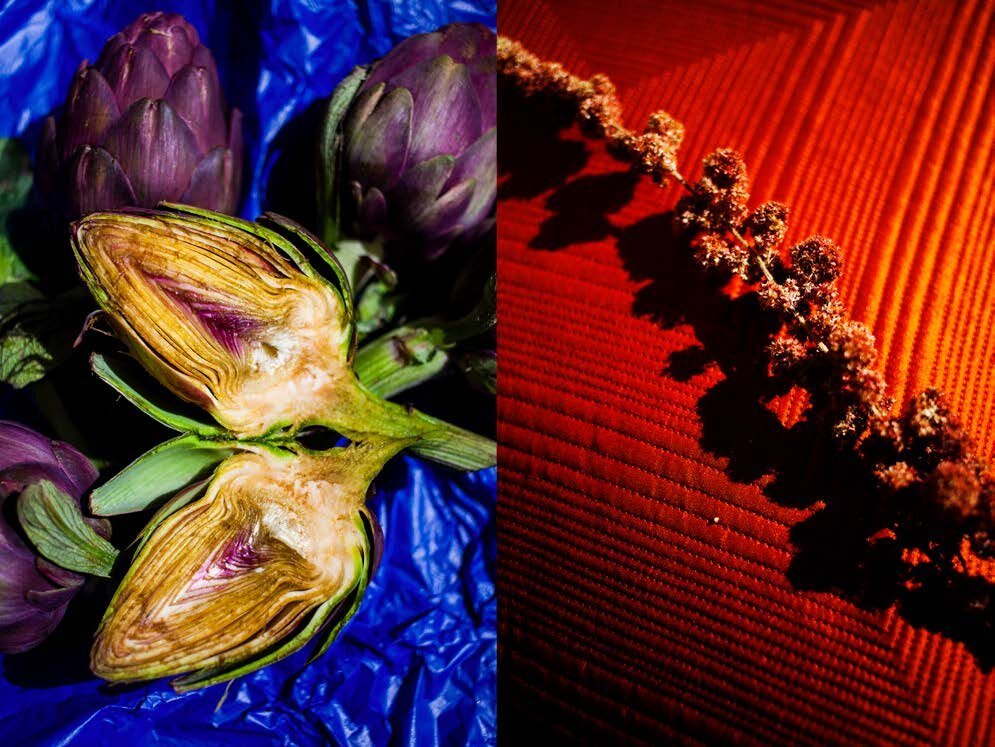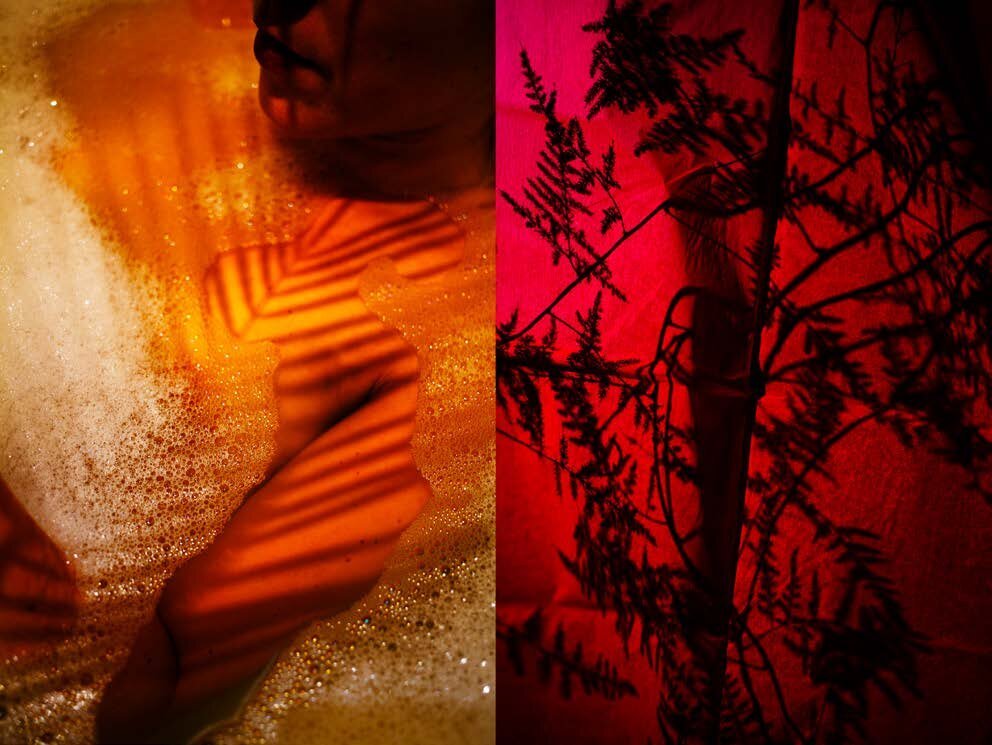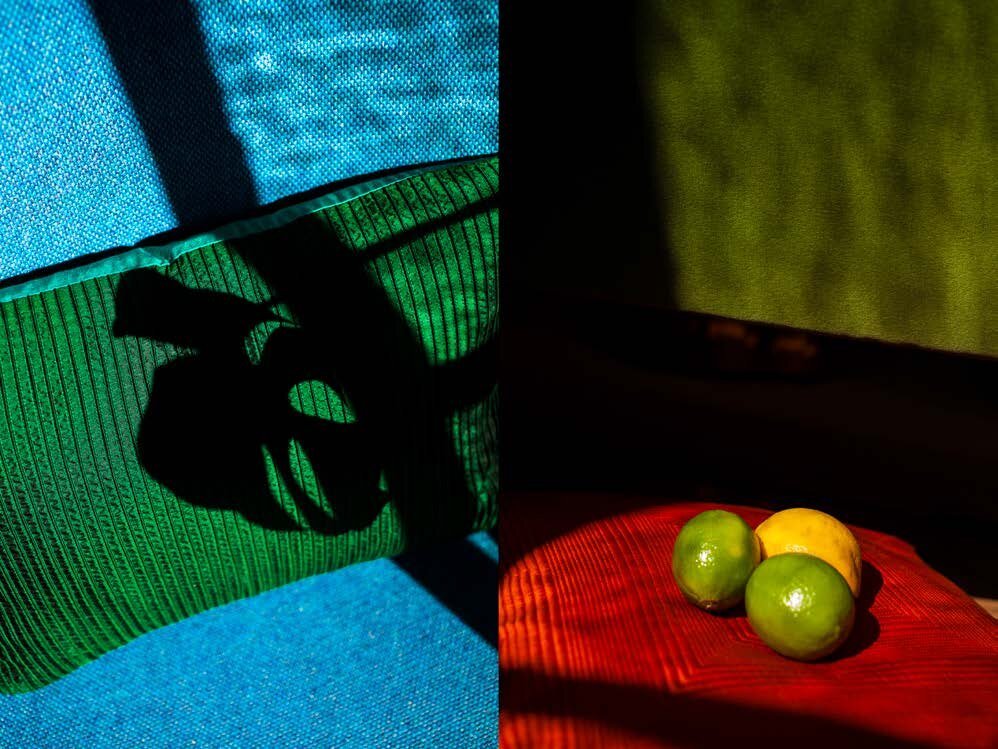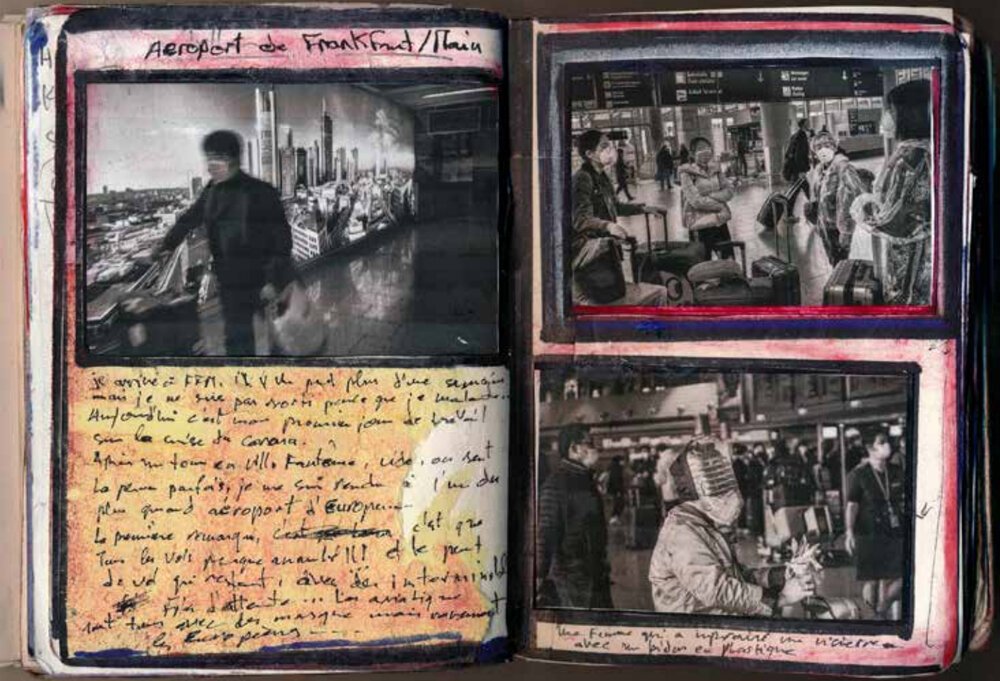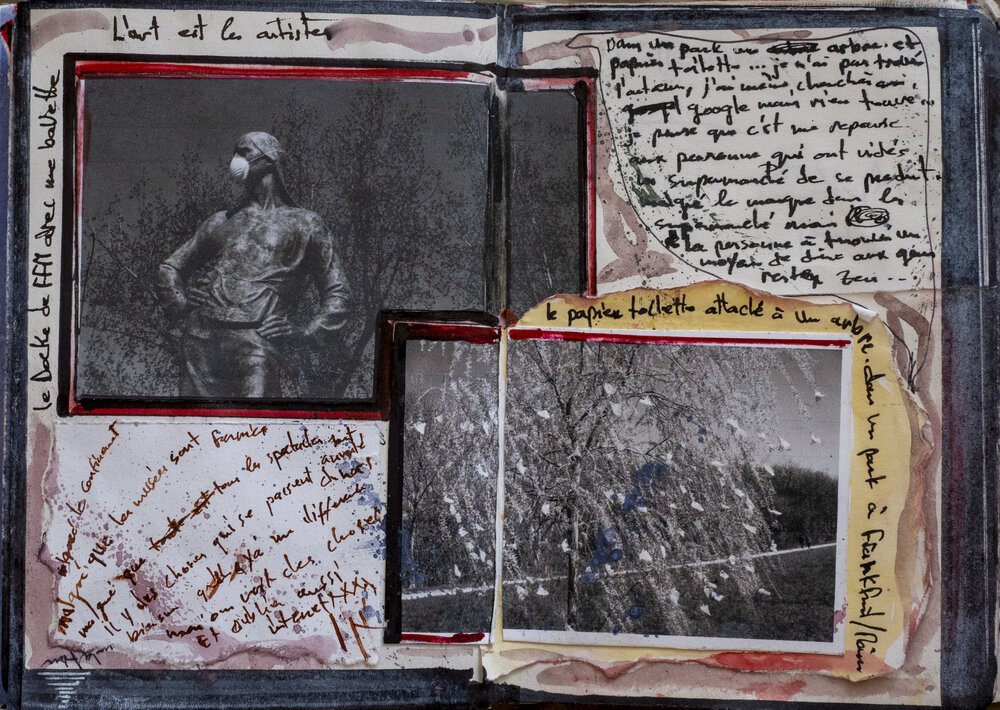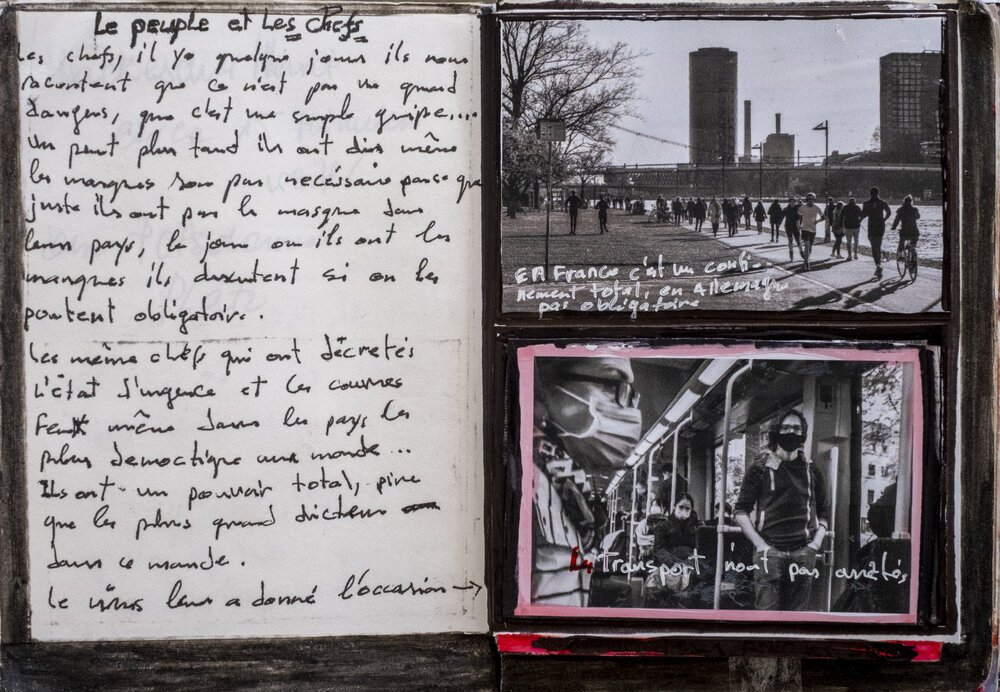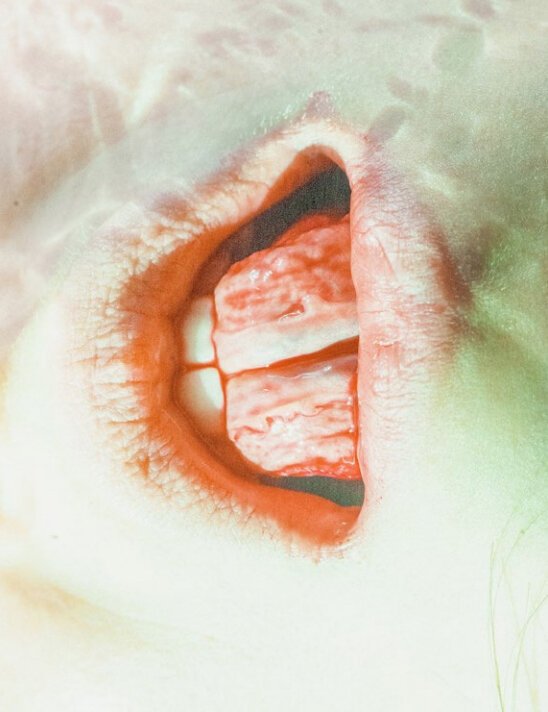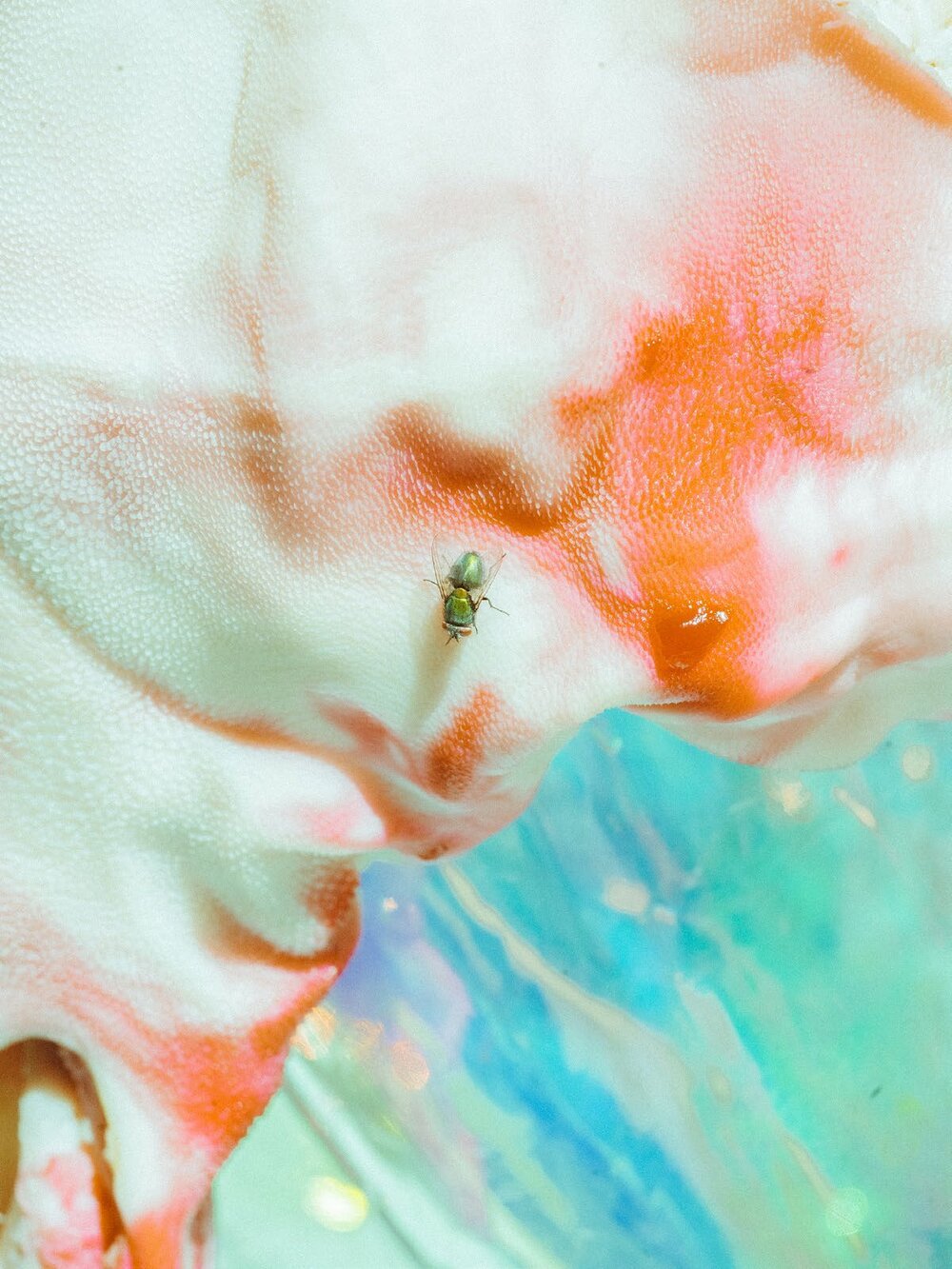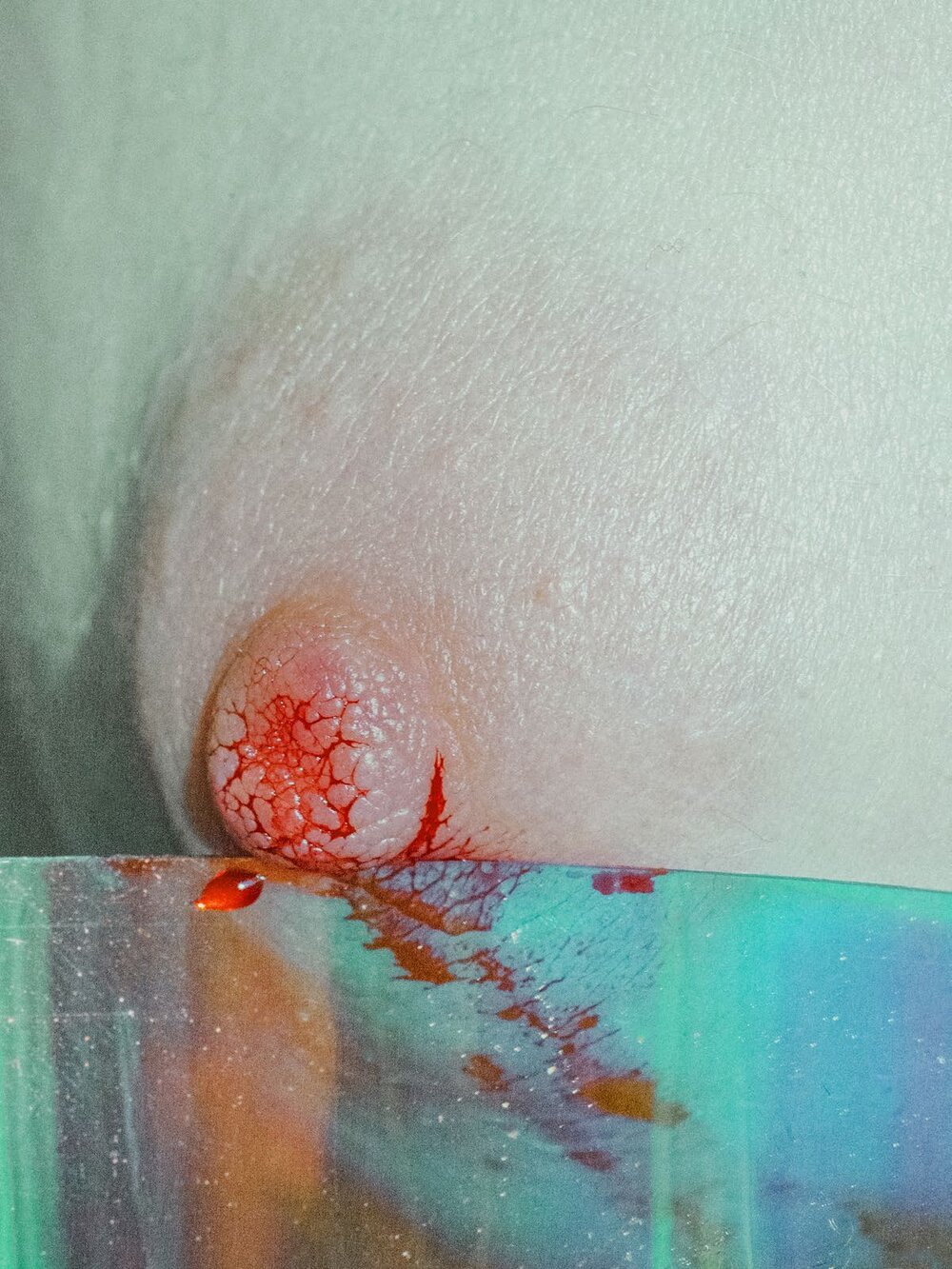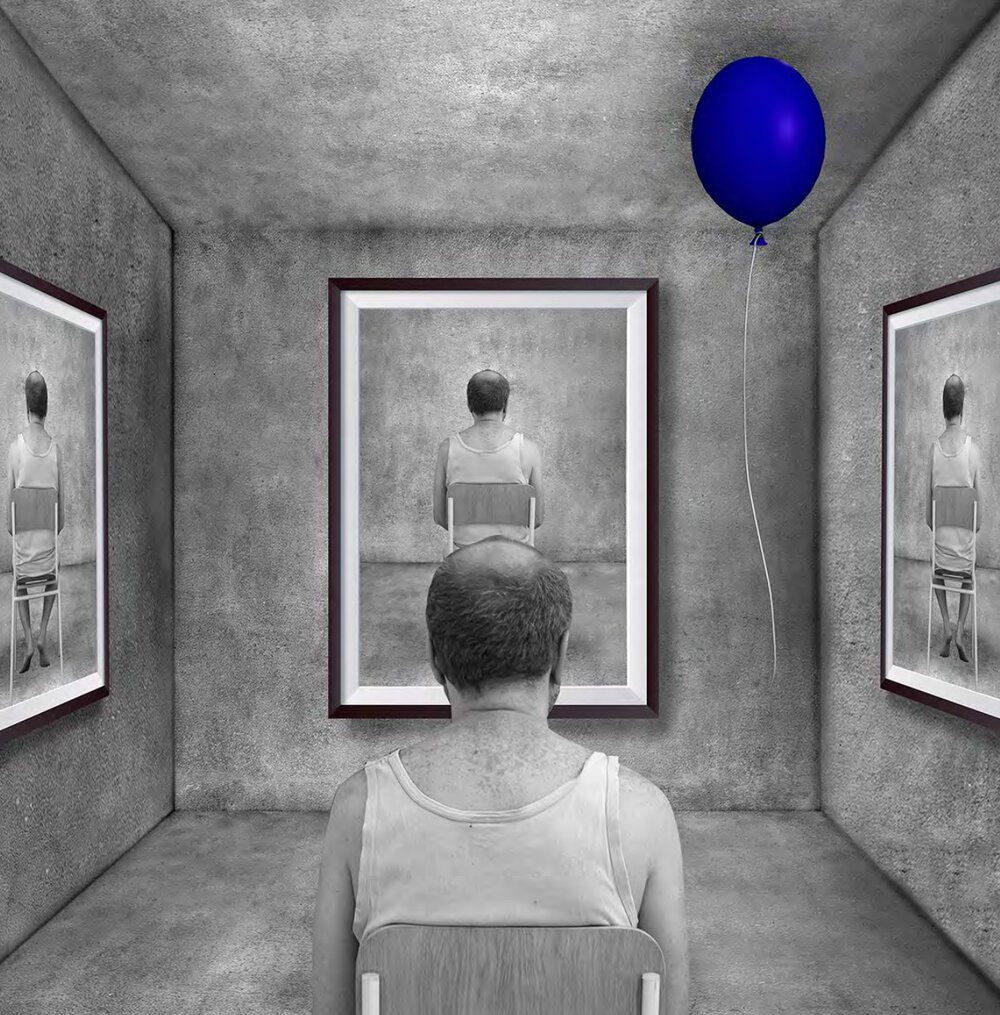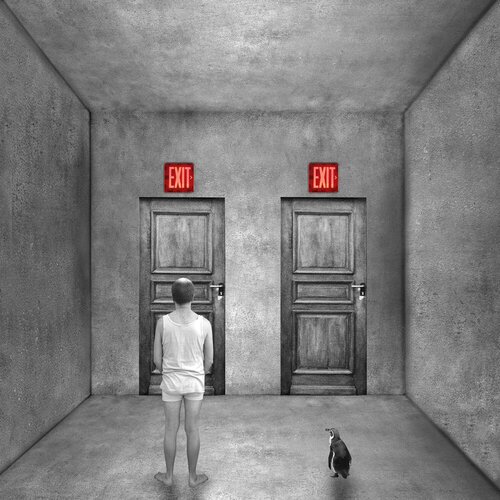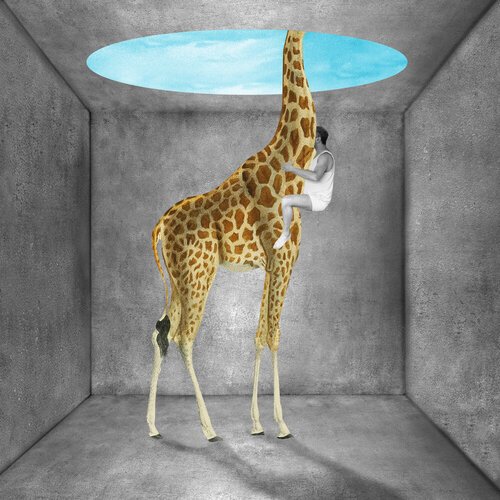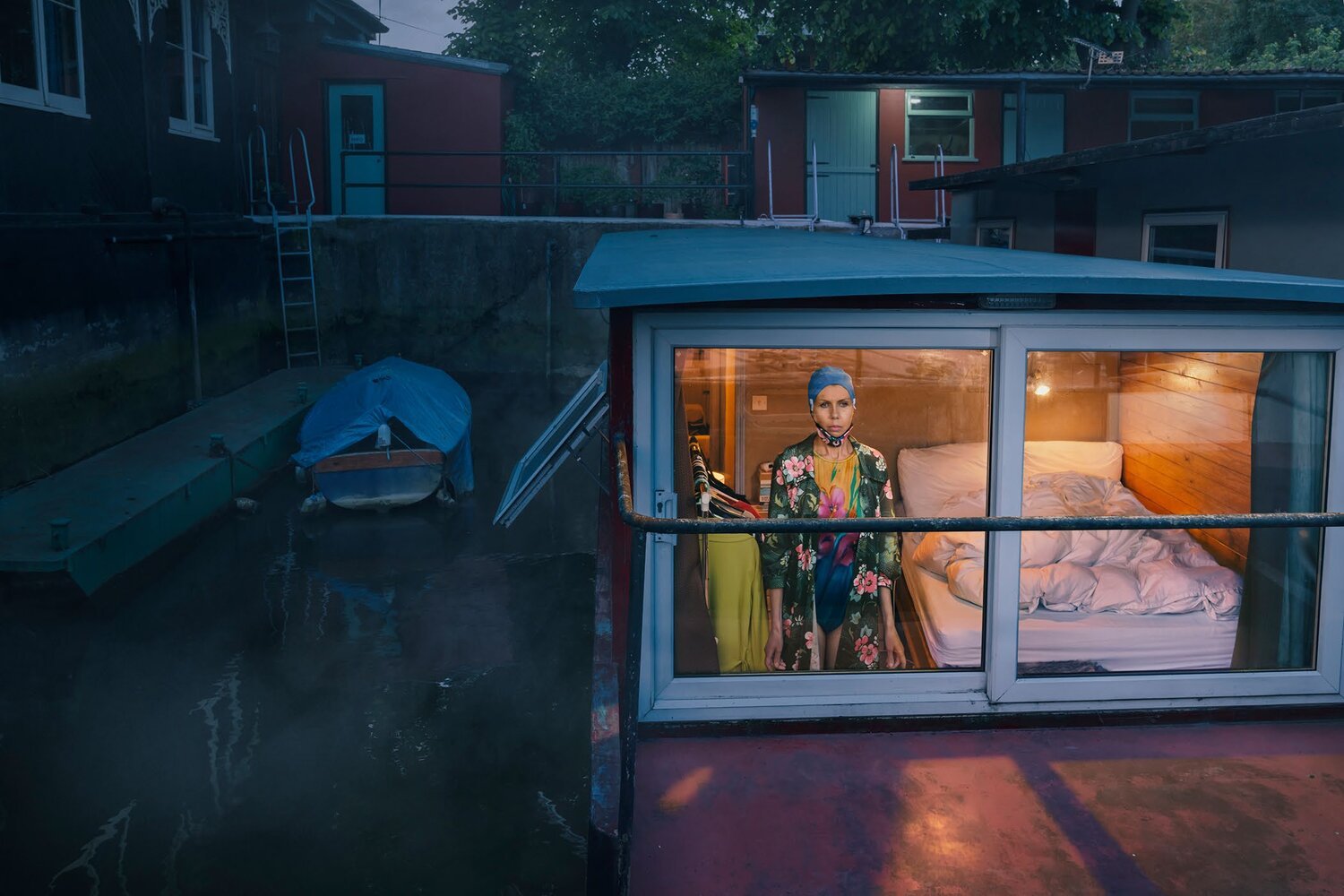
© Julia Fullerton-Batten
The World Within
Photo Brussels Festival
21 January - 27 March 2021
Hangar organises PhotoBrussels Festival, an event dedicated to photography that aims to radiate in the city.
The 5th edition of PhotoBrussels Festival (PBF05) commemorates the year 2020: 419 artists in Europe responded to the “Call for European Photographers” launched during the lockdown (March-June 2020).
Through twenty-seven different photographic and/or video sensibilities, Hangar reveals the seeds of human creative resilience. Each artist presents their vision of the “inner world”, thus shattering the confinement's peculiar atmosphere. Creativity, humour, empathy, reflection, love, inspiration from nature are all principles that promise a quick recovery and a better “after”.
The “Leica Coup de coeur” has been announced at the opening of PhotoBrussels Festival 05, on January 21th 2021, and has been granted a Leica Q2. The winner is Frédéric Stucin.
(FR, 1984), lives and works in Paris (FR).
While locked down in Paris during the coronavirus crisis, Gérome came up with the idea of creating imaginary worlds to help him escape from the sad reality around him.
-
“In this period of confinement, making small films was an escape route for me. I was confined in my small Parisian flat, and I began to use the smallest amount of space available, the slightest a priori insignificant object, to transcend them... My aim was to show what imagination could bring to everyone. Above all, I wanted to do this with humour (the ‘politesse du désespoir’, as Boris Vian said). I posted my first video (from my kitchen) on the Internet as a gag, without thinking.
One of my cousins is a nurse; she was on the front lines of the health crisis. She saw this video and wrote to me that a burst of laughter had made her spit out her tea! If she was able to forget her everyday life for even a few seconds, then perhaps my little gesture was not totally useless? It made me want to go on. (…) When I was younger, I devoured all the films by Jacques Tati and Pierre Étaix. I have to believe that, over time, this humour infused somewhere, almost in spite of myself.”
(FR, 1989), lives and works in Paris (FR).
Quarantine Journal is the story of Marguerite Bornhauser’s lockdown with Jeanne.
-
Through her lens, she reinvents everyday objects and gives them pictorial meaning. The settings are either spontaneous or carefully constructed compositions. She plays with the light as it comes in and leaves through the windows, reflecting on the walls or floor and then disappearing. Confined inside her apartment, Marguerite Bornhauser creates intimate images in harsh light. Her journal takes the form of a game where everyday life is somehow transformed into an alien world. She uses a colander to filter the light that shapes a face, plants become sensual objects, while shadows and bright colours create a world like no other.
(DZ, 1976), lives and works in Frankfurt (DE).
Just back from Algeria, Ferhat Bouda found himself locked down in Germany, where the regulations allowed people to leave their homes. He hoped to be able to access hospitals so that he could document the situation, but was not allowed to do so.
-
He finally found an interesting atmosphere in the streets of Frankfurt: frightening and sad, but also funny and beautiful. “Each person decides to see beauty in a difficult situation.” The face of the city has changed, as have the faces of the people who, through sheer resilience, have become creative.
The result is a visual journal made up of words, photographs, and paintings – a personal testimonial to the way he lives and experiences this unique situation, to his thoughts, and to everyday life.
(FR, 1990), lives and works in Paris (FR).
‘‘The being I am waiting for is not real. Like the mother’s breast for the infant, ‘I create and re-create it over and over, starting from my capacity to love, starting from my need for it’: the other comes here where I am waiting, here where I have already created him/ her. And if the other does not come, I hallucinate the other: waiting is a delirium.’’ - Roland Barthes, A Lover’s Discourse: Fragments, 1977.
-
Lucile Boiron’s pictures speak of longing, of absence, of fantasies, and projection. For her, solitude seems to be the most salutary alternative to the moment she experiences an irrepressible need to have “a room of one’s own”, as described by Virginia Woolf. Lockdown overturns the spaces that melt into one another, while tensions are created between her and others, with the real and the virtual. When the other is nothing but a virtual image and cannot be touched, the screen becomes a receptacle of desire.
Lucile Boiron uses her own body as a subject of experimentation so that she can travel within her own limits.
(FR, 1961), lives and works between Algeria (DZ) and France (FR).
Bruno Boudjelal lives in a densely populated suburb of Paris, between Montreuil and Bagnolet. During his first outing during lockdown, he was surprised at the number of people who would come up and speak to him. He then decided that all of his walks would be within a 500-metre radius of his home. The idea was to keep track of all his encounters, using photographs and written notes.
-
This socio-artistic work tells the stories of those who are rarely given a hearing, as well as those who have continued to work (supermarkets, cleaning services, transport, delivery services) and the people who could perhaps be called the “invisibles”.
(FR, 1985), lives and works in Paris (FR).
From the other side of the mirror
“55 Days. 79200 Minutes. 4752000 Seconds. In a room. So here we are in our interiors, large or small. Finally, we became the Orangutans of the Plant Garden where visitors can watch them eat, drink, do their business, play, get depressed, let themselves go and then pull themselves together. That’s how we came to the other side of the mirror. Shut in. Locked down. Cornered. Deprived…of freedom or dessert. Alone with ourselves, with our thoughts that either go out of the window or are firmly locked in. We needed to get outside, one way or another. With body or with the mind. Fortunately, no one can take our imagination away from us.”
(FR/IT), (IT)
Quaranteen. Picturing young lives in isolation
The images for this project come from observing the day-to-day life of the son of one of the artists during lockdown. Both of the artists are fascinated by the impressive way in which young people have adjusted in the face of this unprecedented situation.
-
Remote schooling and contacting their friends electronically seem to have become totally second nature to them. So, using the same tools and applications, they interviewed twenty young people in quarantine around the world. The screenshots then provide a way into their private spaces and the places where they are locked down. The result is a multifaceted overview of so-called “Generation Z”, with some of the teenagers totally in step and happy with the pace of life in confinement, while others look forward to seeing their friends again in person. Some of them seem worried in the face of the pandemic, while others serenely believe that everything will return to the way it was before.
(DE, 1970), lives and works in the United Kingdom (UK).
Looking out from Within
Just as Julia Fullerton-Batten was planning a photo shoot involving a large team of people, everything suddenly came to a halt. Not wishing to sit twiddling her thumbs and doing nothing, she decided to photograph volunteers in their place of lockdown.
-
Her announcement to do so was met with huge success and her subjects, taken from all walks of life, took part with great enthusiasm. No physical contact was required to complete the project. Everything was done by e-mail, telephone, and social media, and then by communication through windows. The ideas for the sets and clothes to be worn was created with the people themselves who, imprisoned in their place of lockdown, were able to break the monotony while the shoot was going on. Julia Fullerton-Batten interviewed each person and, in doing so was able to document this difficult period. This project also enabled her to relearn how to take photos more simply, without a big team around her.
During the first two weeks of the coronavirus crisis in Italy, Gabriele Galimberti elected to continue working by photographing and interviewing people confined at home during the lockdown in Milan. To create their portraits, he took all the appropriate measures and, after giving instructions, was able to obtain the light he wanted. Each group of people appears tiny compared with the prison that their home has become.
(PT, 1993), lives and works in Lisbon (PT).
Squatting Moms
While many of us are still in bed, Edna Veiga (30) mother of three, essential worker, and squatter, is already in the process of preparing the protective equipment she will need for her 9-hour shift delivering food and providing care to the elderly in Lisbon. Edna and her family have no choice other than to occupy abandoned apartments.
-
Many squatters are migrants or Afro-descendants. Some work as hospital staff, as cashiers in supermarkets, or delivery people. Before the beginning of the pandemic, they were forgotten by society and left to their own devices. Now, they are thanked and applauded for their work, taking risks so that our society can continue to function.
This intimate series shows the strength and determination of these courageous women, prepared to do whatever it takes to put a roof over the heads of their children.
(BE, 1974), lives and works in Ranst (BE).
An Unexpected Lesson in Joy
A strange calm descends upon the earth. The virus keeps everyone indoors and paralyses public life. Life’s mad rush grinds to a halt. We don’t know what lies ahead. From the perspective of a quarantine that may last a long time, Nick Hannes starts keeping a journal. He photographs familiar things: his house, his family.
-
In this world on a reduced scale, there’s time and silence. And then the spring arrives. For two months, Nick Hannes photographs his life with his wife and daughters at home in Ranst, near Antwerp. An Unexpected Lesson in Joy is an intimate photo journal that moves slowly between uncertainty and the joy of being alive.
“Photography gives meaning to lockdown. It makes me look through new eyes at my family environment and the three people with whom I live.”
(FI, 1976), lives and works in Milan (IT).
The Missing Piece
The Missing Piece is an intimate portrait of Milan, one of the cities worst affected by the COVID-19 pandemic.
-
The few people roaming the city find themselves looking at empty advertising hoardings: all of the ads have disappeared. These white monoliths, the size of ancient ruins built by a now-defunct society, become an emblem of this special and strange period. These empty billboards evoke the feeling of having lost something and the fear of the unknown. It’s also like a break from the usual hectic routine. These blank spaces are also like pages to be filled with new ideas, providing room to accommodate a new society.
(UK, 1982), lives and works in Wales (UK).
Finding himself locked down at home with his son and wife, who is pregnant with their second child, Philip Hatcher-Moore decided to document their three months together.
-
His world, in which so much time is usually spent on the road, suddenly shrank, leaving him perched on a hillside in the north of Wales. The surrounding countryside became an opening, somewhere to explore with his wife and son. In doing so, he became aware of the importance of the natural world: trees, fresh air, and physical exertion. The difficulties caused by a loss of earnings are replaced by the freedom of being able to move around and get to know himself again. The microcosm of his house, between laughter and tears, examines his way of working, consuming, travelling, and living together. How will our relationship with the earth shape society? One thing is for certain; for Philip Hatcher-Moore, nature is the pathway to healing.
(FR, 1983), lives and works in Paris (FR).
During the lockdown, Pierre Jarlan launched a modified version of a previous project called Artist Workshops, offering volunteers the opportunity to document themselves in the location where they were locked down. He then took their photos to create a 3D reconstruction of their interior. This becomes the platform for narrating their experiences of lockdown. This work is analysed from a sociological perspective with Isabelle Coutant (CNRS, EHESS) and from a psychiatric viewpoint with Michel Spodenkiewicz (Professor of medicine, CHU-Réunion).
(HU), lives and works in Hungary (HU).
Kíra Krász is locked down with her partner in a small flat in Hove (United Kingdom). Every day, they have had to find new solutions for organising things so that they can be more comfortable. The only real problem is the cramped space.
-
At the beginning of the lockdown, she discovered Tetris, the video game designed by Alexey Pajitnov in 1984. Tetris was used as the basis for various scientific research projects on account of its ability to enhance the efficiency of the brain and to develop skills for solving problems. Between their various tasks, they played Tetris on their Game Boy. The game became a way of accepting their lack of response to COVID-19, the need to adapt, and the ways of conforming and contorting themselves to fit into a limited space. Gradually, as they became better at the game, they were able to harmonise their interactions. Yoga postures became metaphors for the Tetriminos (the geometric figures of the game).
Shapes drawn by hand are superimposed on the photographs, cropped, and positioned on recycled paper.
La Baumette
Staying at La Baumette, the ten or so residents rediscover the interstices, folds and outer limits of the farm. They restock the garden and the bonds become tighter between them. They live, go about their daily lives and work differently. They go to sleep to the sound of frogs and rise in the morning to the song of blue tits. The residents are looking for a different future and their discussions revitalise their damaged desires. They rediscover flesh, the magnetism of bodies and the vibration created by the exchange incarnate. No application can replace the face-to-face.
The images of Yann Laubscher are a space between taking two breaths, a break.
(BE, 1993), lives and works in Brussels (BE).
Home-Play
Home-Play is a photographic project that brings together images taken in the shared house where Leffler lives with his fellow tenants in the Terdelt district of Brussels. The photographs stem from a wish to reinvent the real, as well as to create and play; they make no claim to be anything else. Frivolity, recreation, and joking describe the process that seeks to change the function of everyday objects and to reconfigure a place that they are all used to seeing every day.
The project, which is still underway, plays with the confusion of processes: some of these still lifes and installations have been staged, while others are moments captured spontaneously.
(PT, 1977) lives and works in the United Kingdom (UK).
Edgar Martins has lived through three separate epidemiological crises: SARS (2003), H1N1 (2010), and COVID-19 (2020). This project has a dual aim. On the one hand, he is attempting to contextualise the recent epidemics of coronavirus chronologically and geographically by considering their impact. On the other, his thoughts go to the positive repercussions that lockdown has had on the process of producing images.
-
Before the pandemic, the creation of images was linked to a techno-capitalist doctrine: topping up and constant optimisation to the detriment of the creative process. The constraints induced by the crisis are redefining his relationship with the medium. His diptychs in tension create a resonance between two approaches: the first is what he sees at peak hours from the tops of buildings in which he has been living during the crisis. The other overlays abstract images taken from printing tests and other lab supplies.
The first images are constrained by his limited ability to move about, while the others represent an unconstrained process that knows no bounds and which is freed from technology.
(RU, 1994) lives and works in Itlay (IT).
While in quarantine, Alisa Martynova realised that her dreams have become more vivid, colourful, and even more surrealist and incomprehensible than usual. Her partner keeps a diary of their days in lockdown, and she decides to accompany his text with her photographs. These images “pictorize” their dreams and emotions. They look inward and enable her to reconnect with herself, because dreams are a representation of the mind’s infinite resources. It has been, she says, an opportunity to follow the example of the French poet Saint-Pol-Roux who, each evening when going to sleep, would place a notice on his door saying “Poet at work”.
(FR, 1967) lives and works in Paris (FR).
Patrick Messina lives in Pantin, on the outskirts of Paris. He went through lockdown with Alma, Côme, and Joseph, watching his two children at home and observing what was going on outside in the street. Everyone seems to want to escape. Joseph (7 yrs.) played Animal Crossing on his screen and skipped in the road. Alma (20 yrs.) read her books avidly.
-
His apartment overlooks the Stade Charles-Auray, a venue for sport and meetings. It is open year-round and attracts many young people. During the early days of lockdown, the emptiness and silence around the stadium was astonishing. But very soon, every day at 6:00 p.m., this heavy silence was broken by youngsters from the local area wanting to enjoy their sport. They climbed over the bolted gates without a second thought. Flouting the ban on gatherings, they all got together amid general friendly banter.
Between climbing the gates and the applause, there was energy to burn in the district, contrasting with the slow pace of life and solitude.
(FR, 1995) lives and works in Brussels (BE).
Suillus
“During the 20th century, emissions from the old zinc factory in Lommel caused all vegetation to disappear completely, leaving an arid landscape covered in white sand. A conifer forest was planted to stop the sandy plains from gaining ground, creating a unique reserve. The pine trees have been able to survive thanks to their symbiotic coexistence with Suillus Bovinus mushrooms, which protect the vegetation from toxic products. (…)
-
When the lifting of lockdown was announced, Alice Pallot and her friends dreamt of having a space of freedom and set out to explore Lommel in the province of Limburg, so that they could discover their 'Belgian Sahara'. Fascinated by the metamorphoses, silent realities, and beauty of the toxic landscape, this micro-ecosystem plays a natural role in Alice Pallot’s artistic process. She questions the impact that humans have on nature and the beneficial effects that lockdown has had on the environment. Her immersive and captivating work bears testimony to spontaneous exploration and offers a message of hope. The images are taken from sunrise to sunset, making the series chronological, blurring the boundaries between reality and phantasmagoria.” – Constance Nguyen.
Eléa Jeanne Schmitter & Le Massi
(FR, 1993 / 1989, CA) they live and work in Paris (FR).
Ode to.
An Ode. An omen. This video essay, this lyrical conjugation between text, image, and music is designed to broaden the perception of freedom in a limited context. It pays homage to the sublime, to that feeling of grandeur, of communion between what we are and what we can become.
-
It is not taking a position on freedom epistemology, but rather a search for the freedom of one’s imagination. Recognising their position on this earth and all of the privileges granted to them at birth, Elea and Le Massi do not claim to have an all-encompassing understanding of what freedom means. They simply want hope to be felt as something both tangible and malleable, something personal, yet also communal. This visual piece invites the viewer to rediscover their senses and tries to evoke a feeling of detachment of oneself from reality in order to achieve a state of gliding weightlessness in which “floating” rhymes with “eternal”.
(FR, 1988) lives and works in Paris (FR).
Alexandra Serrano worked every day from March 18th to May 10th, with cyanotype (an old photographic process that enables the creation of impressions on photosensitive paper). Since the beginning of the lockdown in France, the artist has been collecting press articles and plants found during brief daily outings with the aim of creating an intangible herbarium, overlaying the topicality of the pandemic with the natural surroundings.
-
Harmonised by the cyanotype technique, the images breathe a poetic breeze into everyday life. The anxiety and worries caused by current events gradually disappear and give way to a level of tranquillity. The artist invites viewers to distance themselves from the crisis and encourages them to look more carefully at the environment and nature.
The exposure time for each shot depends on the natural light available and demonstrates great patience.
(FR, 1977) lives and works in Paris (FR).
March 17, 2020: 1st day of confinement. Having lived in Paris for the past 20 years, Frédéric Stucin as a street photographer decided to explore his city at night during the lockdown.
Thanks to his press card, he can go outside to take pictures. Like an empty film set, the French capital comes across as distant and false, yet intimate. His project forces him to look at the city through different eyes and to rediscover it. In doing so, he also immortalises a unique time in our lives; a period during which the endless hustle and bustle of the city were put on pause.
Frédéric Stucin has been granted the “Leica Coup de Coeur” by the jury members.
-
Vincent Zanni prompts reflection on the ever-changing dynamics of memory, loss, and family heritage, pushing the boundaries of conventional practices. His experimental darkroom approach and exploration of family archives contribute to the ongoing dialogue about the transformative potential of photography in contemporary society. Through the materiality and changing nature of photography, he aspires to explore the relationship between images, memories, and the evolving structure of our lives. The conclusion of this research has taken the form of the four basins of La Maison, which receive four stages of mourning work on the artist’s grandmother’s house: the archives from 1920, his grandmother’s room, the emptied house seen from the inside, and then from the outside. A fifth stage will conclude the series: the destruction of the house in 2024. These visual testimonies fixed on gelatin and immersed in the basins remind us that memories, like the house, only hold for a time before disintegrating.
(IT, 1984) lives and works in Milan (IT).
Series Gates
“A stream of images is coming into our homes.” - Paul Valéry (1928).
In the age of the coronavirus, at home, images are the only source of information from the outside world. The circulation of images scans our perception of time passing. Mattia Sugamiele focuses his research on the imaginary, collecting and archiving iconic images, particularly the ones concerning religion, its role in society, and the crisis it is living through at the moment.
-
Parallel to this, the artist looks for representations of the virus in medical studies on the Internet, adding them to the religious images showing the collision between the fragility of religion and the crystallised truth of science.
The clash of worship and human science reflects the complexity of these times and poses new questions.
(BE, 1978) lives and works in Brussels (BE).
Wuhan Radiography
Curiosity can be a serious flaw, as well as one of the greatest qualities. But it is also the very essence of photography. During these times when we have been deprived of our freedom, Simon Vansteenwinckel has tried to find a way to stay inquisitive, continuing to travel rather than falling back on himself.
-
From his living room, he opens a window on the world courtesy of the amazing tool Google Street View. This tool enables us to travel to virtually all parts of the planet. Wuhan, the place where it all began, centre of the pandemic and a little-known city, is now at the heart of rumours and current affairs. And that is precisely where the photographer has pointed his cursor. He photographs his computer screen using Washi F film, originally used in medical radiography for diagnosing respiratory diseases. It’s like having a personal and distorted X-ray of the city.
(DE, 1965) lives and works in Paris (FR).
Face to face with my son
Faced with his questions
The face of abstraction
Coronavirus: what is it?
-
My son, Leonard, who is 16 years old and has Down syndrome, is faced with numerous questions because he has to deal with this ‘unreal’ reality. Having free time at home with his parents was cool in the beginning. Little by little, he had to digest the total abstract notion of coronavirus. In order to answer the everyday questions facing him, he proposed a sort of parade of reactions to reveal what he was feeling and what he understood; so one photo a day has now become our way of expressing this feeling (…) Leonard has a trusting perception of the world. (…) His relationship with others, as well as time, space and danger, is more confused than that of most people. Every day he asks questions such as: Can we go to the cinema? Can we go to the swimming pool? (…) Our daily answers are helping him, little by little, as is his calendar, like a mirror of time (…). Our story, between our own four walls, has become our arrangement; and for Leonard, his own 'interior world'.”
Artists Capsules
Nine week of testimonies
The twenty-seven photographers of "The World Within" exhibition talk about their work. Nine weeks of testimonies. Every Tuesday, during nine weeks, Hangar will present a selection of three "artist capsules". Check it out!
Caimi & Piccinni
Laure Vasconi
Alexandra Serrano
Julia Fullerton-Batten
Gabriele Galimberti
Philip Hatcher-Moore
Mattia Sugamiele
Yann Laubscher
Gonçalo Fonseca
Sarah Bouillaud
Ferhat Bouda
Kíra Krász
Marguerite Bornhauser
Edgard Martins
Simon Vansteenwinckel
Alice Pallot
Alisa Martynova
Gérome Barry
Frédéric Stucin
Pierre Jarlan
Giovanni Hanninen
Lucas Leffler
Elea Jeanne Schmitter & Le Massi
Lucile Boiron
Nick Hannes
Patrick Messina

